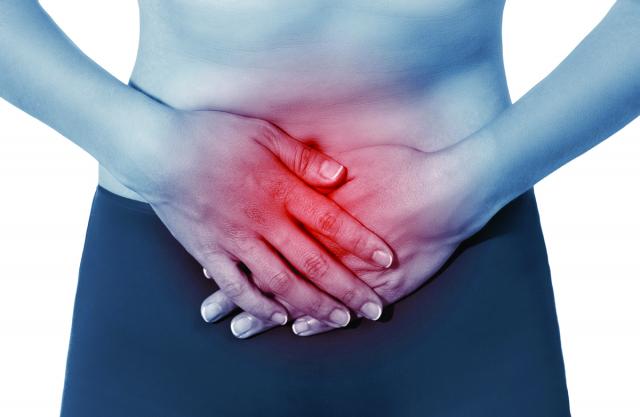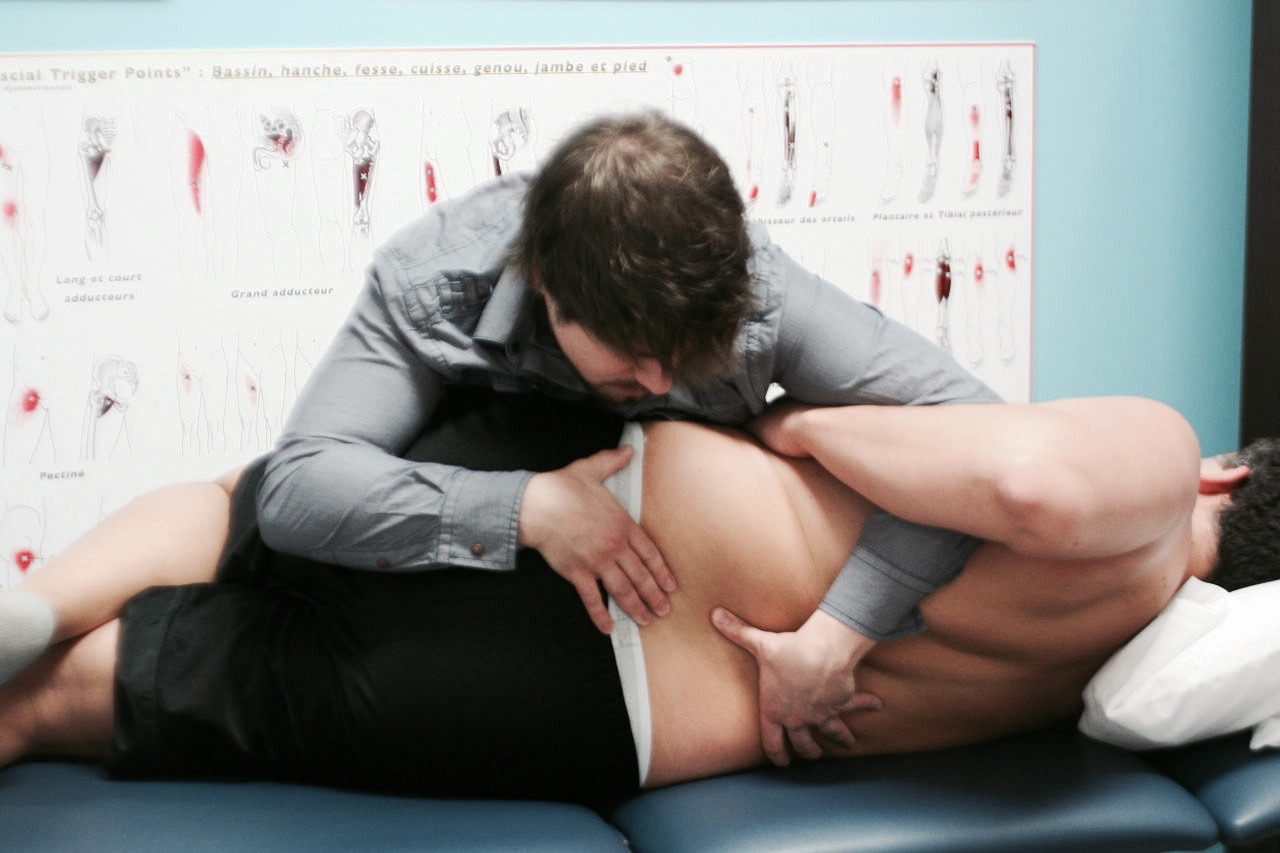Pelvic Floor Rehab / Physiotherapy
* Note that the perineal physiotherapy service for men is only available at the Montreal clinic.
Perineal Physiotherapy Or Pelvic-perineal Rehabilitation:
PHYSIOTHERAPY SERVICES
What is perineal rehabilitation?
The pelvic floor is the name given to the group of muscles and other structures that form the base of the pelvis. Its role is primarily to support the bladder, urethra, rectum and uterus. These same muscles are used to retain and then evacuate urine, stool and gas at the appropriate times. The pelvic floor also has a sexual function since it is involved in the adequate perception of sensations during sex and during orgasm.
Like other muscles in the body, pelvic floor muscles can become dysfunctional as a result of various conditions.
The role of the physiotherapist specializing in perineal rehabilitation is first of all to make a detailed assessment in order to find the precise source of this problem. Once the dysfunction has been identified, the physiotherapist can establish an appropriate treatment plan with you.
The objective of this treatment plan is to restore control, level of strength and endurance of the pelvic muscles or to relax them in order to help the person regain adequate functioning of the urinary, anorectal and / or vulvovaginal systems. . This regained control will often eliminate or improve the abnormal symptoms affecting your urinary system, perineal or anorectal area.
What kinds of problems can be treated in perineal rehabilitation?
– Pelvic, perineal, anorectal and coccygeal pain
– Urinary incontinence: involuntary loss of urine
– Overactive bladder: urgent and frequent urges to urinate
– Anal incontinence: involuntary loss of stool or gas
– Difficulty / pain in passing stool: constipation problem, anal assynchronism
– Prolapse: descent of the uterus, bladder, rectum or small intestine
– Perinatal
– Diastasis: separation of the abdominals following pregnancy
What does the perineal rehabilitation treatment consist
– manual therapy (internal and external techniques);
– rehabilitation of muscle control of the pelvic floor and other muscles of the pelvis;
– exercises and advice.
You should plan on average between 3 to 10 visits, depending on your problem.

Female Specific Pelvic Perineal Pain
The terms dyspareunia , vulvodynia , vaginismus , vestibulitis and vestibulodynia are frequently used to make a diagnosis when there is a problem with pain in the perineal region in women.
Dyspareunia
Another diagnosis frequently made in patients reporting pain in sexual relations is that of a problem of a psychological nature (anxiety, aversion to sexuality, etc.) The patient’s symptoms are then often minimized or even a simple referral to the psychologist. or sex therapist is made. While there may indeed be a psychological component, this usually explains only one part of the problem. It may therefore be necessary to consult a physiotherapist in parallel with the treatments with the psychologist / sexologist to identify all the components of the problem.
Vestibulodynia / Vestibulitis
Vulvodynia
Vulvodynia is frequently reported by patients with other pathologies affecting the urinary or digestive system, such as interstitial cystitis, irritable bowel syndrome or Crohn’s disease. In these patients, part of the pain can also be explained by a contraction of the pelvic floor in reaction to the pathology. Although physiotherapy cannot by itself cure these conditions, it can help reduce the pain associated with them.
Vaginismus
Postpartum And Postoperative Pain
Vaginal Atrophy Following Menopause Or Radiation Therapy

Perineal rehabilitation in pregnant women (perinatal)
Abdominal diastasis

Male-specific pelvic-perineal pain (prostatitis)
1 – You suffer from pelvic pain (penis, testicles, glans, pubis, anorectal, coccyx)
2 – Your doctor has not identified objective signs of infection or specific medical conditions that could explain your pain (urine culture, analysis of prostate fluid and inconclusive blood test)
3 – Your symptoms have not improved after taking antibiotics or alpha blockers prescribed by your doctor.
Pelvic pain can frequently be caused by spasms of the pelvic floor muscles. These spasms can be the result of a fall, pelvic surgery such as a vasectomy, repetitive lifting, prolonged sitting (e.g. cycling), sexual abuse or a chest problem. or lumbar. When the problem is muscular in nature, your perineal rehabilitation physiotherapist can help you reduce your pain.
Post-prostatectomy urinary incontinence
Pain in the perineum area which may be present in both women and men
Anorectal pain
Coccygeal pain
Pudendal Nerve Neuralgia Or Pudendal Nerve Syndrome
It should be noted that although the pudendal nerve syndrome is the best known, other pelvic nerves (ilio-inguinal, ilio-hypogastric, genitofemoral) can also be irritated or compressed and thus be the cause of your symptoms. pains.
Urinary Incontinence
Stress Urinary Incontinence
Urge Urinary Incontinence
Mixed urinary incontinence
Anal Incontinence (Fecal Incontinence And / Or Gas Incontinence)
Physiotherapy can help solve your problem with anal incontinence when it has a muscle component. The treatments consist of teaching pelvic floor exercises, rehabilitation techniques for normal rectal sensitivity and relevant advice that can improve your situation (nutrition, hydration habits, evacuation habits etc. typically 5 to 8 treatments for the treatment of this condition.
Difficulty Passing Stools (Constipation And / Or Pain)

Pelvic Prolapse (Organ Descent)
Scientific Evidence Supporting The Use Of Perineal Physiotherapy
Urinary incontinence
– The pelvic floor training in an important way during and after childbirth prevents urinary incontinence in women
(Siv Mørkved et al. 2013. Pelvic floor muscle training during pregnancy to prevent urinary incontinence: a single-blind randomized controlled trial. Obstetrics & Gynecology, Volume 101, Issue 2, February 2003, Pages 313-319.)
– The use of electrical stimulation coupled with physiotherapy for pelvic floor rehabilitation in cases of urinary incontinence reports a significant improvement in pelvic floor strength, as well as a marked reduction in urinary leakage.
(Amaro J, Oliveira Gameiro M, Padovani C. Treatment of urinary stress incontinence by intravaginal electrical stimulation and pelvic floor physiotherapy. Int Urogynecol J. 2003; 14 (3): 204-8.)
Pain in the vaginal and perineal area
– 51.4% of women with vestibulodynia treated in physiotherapy using pelvic-perineal rehabilitation, including biofeedback, report a significant improvement in the intensity of pain during sexual relations.
(Bergeron et al. 2002. Physical therapy for vulvar vestibulitis syndrome: A retrospective study. Journal of Sex and Marital Therapy, 28, 183-192.)
– 83% of women with induced vestibulodynia who received physiotherapy treatment with biofeedbak reported having a significant reduction in their pain and 83% of them regained an active sex life following treatment.
(McKay et al. 2001. Treating vulvar vestibulitis with electromyographic biofeedback of pelvic floor musculature. J Reprod Med, 46, 337-342.)
– After 8 physiotherapy treatments, 10 out of 13 women with induced vestibulodynia reported having a significant decrease in the intensity of pain during sexual intercourse.
(Goldfinger et al. 2009. A Prospective Study of Pelvic Floor Physical Therapy: Pain and Psychosexual Outcomes in Provoked Vestibulodynia. J Sex Med, 6: 1955-1958.) 1968.
